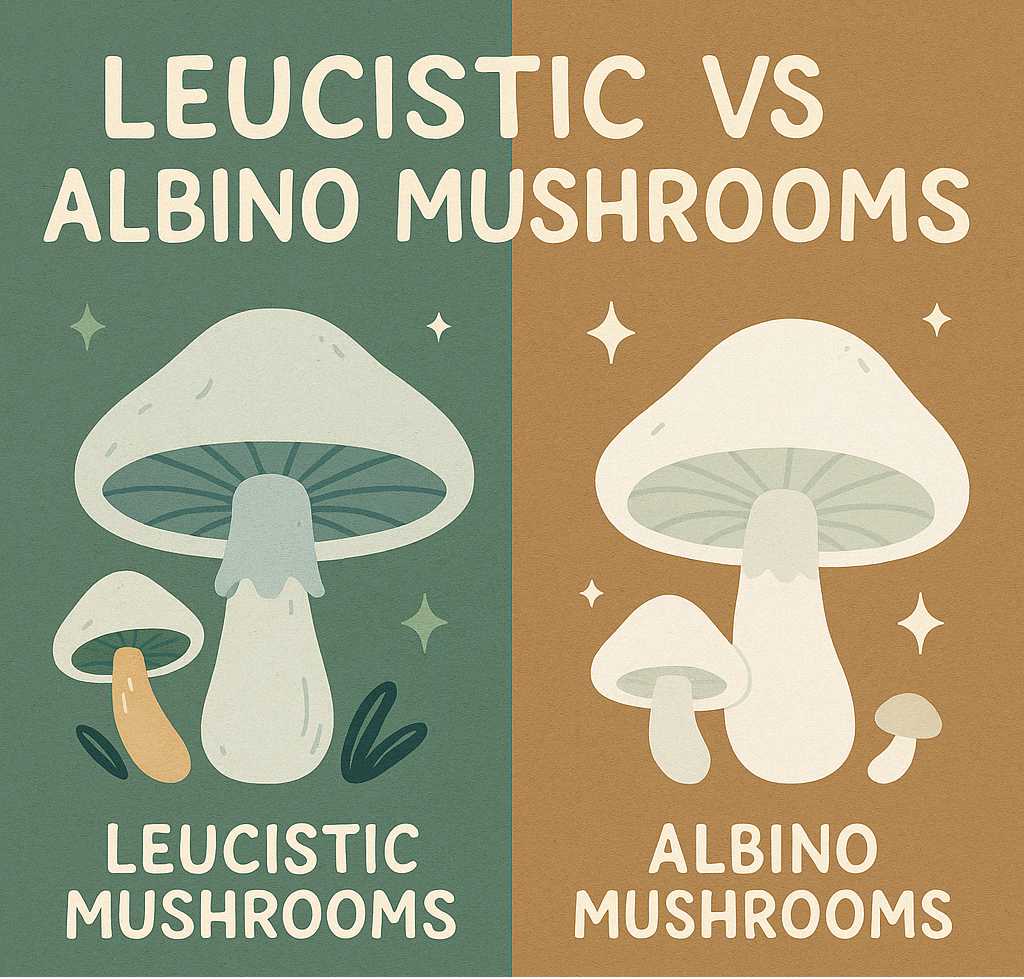
When it comes to mushrooms, especially beloved species like Psilocybe cubensis, few things spark more curiosity (and confusion) than the terms leucistic and albino. Both are used to describe pale or pigment-deficient mushrooms, but are they really the same thing?
Not quite.
In this guide, we’re diving deep into the spores to explore the quirky world of leucism and albinism in mushrooms.
Why Do Mushroom Colours Matter?
Besides aesthetics (and Instagram appeal), mushroom colouration is often linked to genetics, environmental adaptations, and sometimes, the way they interact with light or other organisms. For mycologists, growers, and collectors alike, colour variants can be fascinating clues into a mushroom’s lineage or quirks.
Enter leucism and albinism.
What is a Leucistic Mushroom?
A leucistic mushroom has a partial loss of pigmentation. This usually results in pale or white-looking mushrooms, but there’s a catch: they still retain some colour.
Key traits of leucistic mushrooms:
- Usually pale white, ivory, or cream
- May have faint hues on the stem or cap
- Still produce dark spores (e.g., purple-brown in Psilocybe cubensis)
- Not a true albino genetically
Leucism is caused by a genetic mutation that affects how pigment is expressed in certain parts of the mushroom. But unlike albinism, it doesn’t shut off pigment production entirely.
Think of it as mushrooms wearing a very light filter on their Instagram story.
Popular Leucistic Strains:
These strains are highly sought-after for their ghostly appearance, but still behave like standard cubensis under the microscope.
What is an Albino Mushroom?
An albino mushroom, on the other hand, has a complete lack of melanin or other pigments. These mushrooms are truly devoid of colour—no tan caps, no dusky stems, and most importantly, no dark spores.
Key traits of albino mushrooms:
- Bright white appearance
- No pigment at all, even under magnification
- Often produce clear or very light spores (sometimes appearing transparent)
- Caused by a different, more complete genetic mutation than leucism
In cubensis varieties, albino mushrooms are much rarer and often harder to work with due to lower spore visibility and viability.
True Albino Examples:
Spores: The Telltale Sign
If you’re trying to tell whether a mushroom is leucistic or albino, one of the best ways is to look at the spores:
| Trait | Leucistic | Albino |
| Cap Colour | Pale, sometimes slightly tinted | Pure white |
| Spore Colour | Normal (dark purple/ brown) | Clear or very light |
| Genetic Mutation | Partial pigment loss | Total pigment loss |
So if your ghost-white mushroom still drops dark spores, congrats—you’ve got a leucistic buddy.
Why It Matters
In the world of mushroom spores and amateur mycology, identifying these traits can:
- Help you track genetic lineages
- Aid in microscopy studies
- Make your spore collection the envy of the internet
Plus, let’s be honest—there’s something magical about studying a mushroom that looks like it wandered out of a fantasy novel.
Final Thoughts: Leucism vs. Albino
So, to recap:
- Leucistic mushrooms are pale, mysterious, and still carry the pigmentation torch (just barely).
- Albino mushrooms are the true pigment ghosts of the mushroom kingdom.
Both are beautiful, both are fascinating, and both are welcome in any spore collector’s lineup.
Now go forth and identify your fungi like a spore-slinging detective.